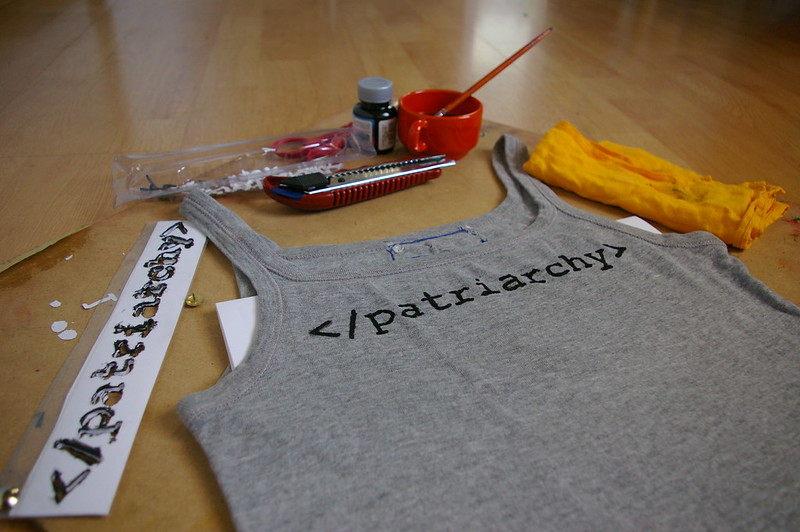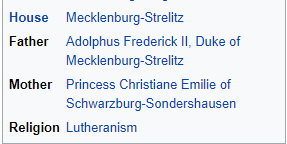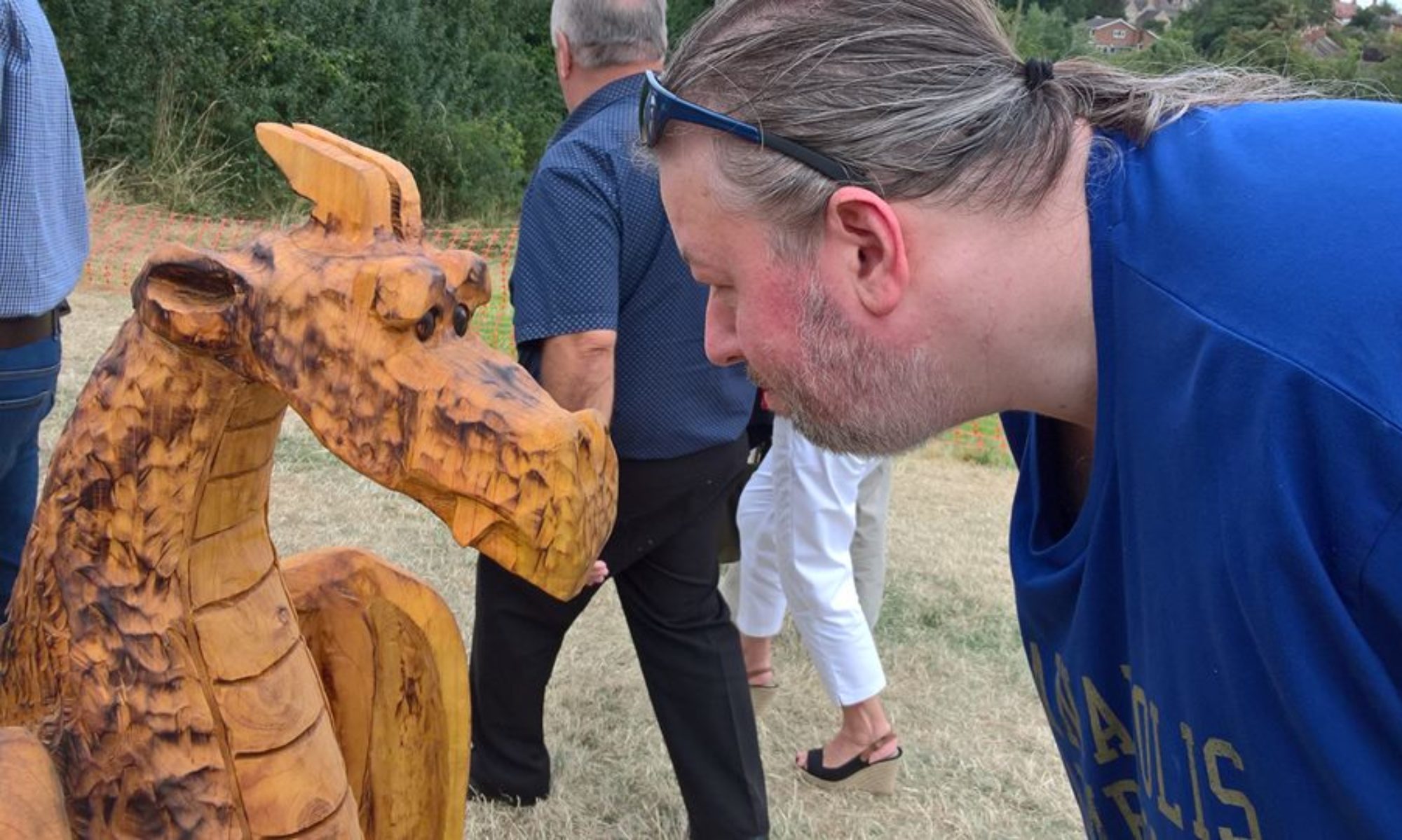It all started after watching one too many videos narrating the English monarchy, all starting from King William Ⅰ in 1066 as if he’s the first king of England. This annoys me as it completely disregards the handful of Anglo-Saxon kings of England who reigned before the Normans.
They’re Kings of England. If you’re going to make a list of the Kings of England, then you should include the Kings of England.
It was this that made me want to make a particular edit to both the King Alfred and Queen Elizabeth pages on Wikipedia, acknowledging each as related to the other. But what is their relationship and through who?
I went to the page for Queen Elizabeth Ⅱ and started following the Mother/Father links until I found my way to King Alfred, mostly going through the other kings of England. I counted 36 generations, but was there a shorter or even longer route?
Sounds like a job for some software!

Scanning Wikipedia
We have the technology.
- Visual Studio 2019 and C#.
- RestSharp, a library for downloading HTML.
- HtmlAgilityPack, a library for parsing and extracting data from HTML.
With these libraries downloaded from nuget, I was able to write some very quick and dirty code that would download the HTML for the Wikipedia page of Queen Elizabeth II, storing the HTML in a cache folder to save re-downloading it again.
Once the HTML is downloaded (or read from the cache), HtmlAgilityPack can be called upon for the task of pulling items of data from the HTML. For example, the person’s full name, which is always the page’s only <H1>…</H1> element, can be extracted using one line of code:

string personName =
html
.DocumentNode
.Descendants()
.Where(h => h.Name == "h1")
.Single()
.InnerText;I used HtmlAgilityPack and LINQ in a similar way to pull out the Mother and Father for each person. The code would look for the info-box <TABLE>, then look inside for a <TH> with the text “Mother” or “Father”. It would then take a few steps backwards to look for the <TR> that the text is a part of and finally pull out all the links it can find inside.
With the links to the Queen Elizabeth’s mother and father, the code would add those links to a queue and the top-level would pull the next link and continue until the links runs out.
Calm down!
This section was added after initial publication.
I would hope that people don’t need to be told to be considerate, but please be considerate.
Before I started on this project, I checked Wikipedia’s robots.txt file. This told me that my project was acceptable, quoth: “Friendly, low-speed bots are welcome viewing article pages, but not dynamically-generated pages please.”
The article pages were exactly what I wanted. My code was already fairly low speed as it was all in a single thread. Nonetheless, I added a short delay after each download once I had worked the kinks out. I also set the User-Agent text to include my email address and phone number so Wikipedia server admins could raise an alarm with me personally if necessary.
As I was running my code in Visual Studio’s debug mode, I could leave the code running unattended (once I had observed it over the first hundred or so) with some breakpoints to stop everything until I could return to inspect what happened.
The most important were during examination of the response from Wikipedia. If the response was anything other than an 200/OK response (after redirects) or anything other than HTML, I wanted my code to stop dead until I can inspect what happened. Even if it happened overnight, I still what that response object in memory.
In the end, the bulk of the download took two days in a number of bursts. I’ll be sending a modest donation to the Wikimedia Foundation in thanks for accommodating my bizarre projects.
“She’s just a girl who says that I am the one…”
I made the decision here to only include people with an info-box. Extracting someone’s parents from free English text was a step too far. If you’re not notable enough to have an info-box with your parents listed, you’re not notable enough for this project. (Although I did find a couple of people who didn’t have a suitable info-box surprisingly early in the process. Rather than hack in an exception, I edited Wikipedia to include those people’s parents in their info-box, copying the link from elsewhere in the text.)
While that got me out of a small hole, more annoying was when the info-box listed “Parents” or “Parent(s)” instead of Mother and Father. I wanted to track matrilineal and patrilineal lines, so it was a little annoying to just have an individual’s parents with no clear indication of which one is which. I coded it so that if there’s only one one link, assume it is the father. If there’s two links, assume the father is the first one.

“Also known as…”
Another issue was that some of the pages changed names. RestSharp would dutifully follow HTTP redirects, but I’d end up storing a page with one name but having a different name internally. This happened right away as the page for Queen Elizabeth links to her mother as “Elizabeth_Bowes-Lyon“, but once you follow the link, you end up at “Queen_Elizabeth_The_Queen_Mother“.
The HTML included a <LINK> tag named the “canonical reference”, so I could pull that out and use it as the primary key in my data structure. To keep the link between child and parent, it collects the aliases when the are detected and a quick reconciliation loop corrects the links after the initial loop completes.

From Alfred to Elizabeth.
Once I had a complete set of Wikipedia pages cached, the next step was to build a tree with all of the parental connections that lead from King Alfred to Queen Elizabeth. I knew that some non-people had crept in because someone’s parents would be listed as “(name) of (town)”, but that didn’t bother me as those towns wouldn’t have a mother or father listed and those loose ends would be discarded.
I wrote some code to walk the tree of connections. It started from Queen Elizabeth and recursively walked to each of the mother and father node. If a node ended on King Alfred, the complete chain would be added to the list of nodes.
With this reduced set in place, I churned through the nodes and generated a GraphViz file. For those who don’t know about it, this an app for producing graphs of connected bubbles. You tell it what bubbles you want and how they are connected and it automatically lays them out.
At this point, I was expecting a graph that would be mainly tall and thin and it would appear right here in this article. While family trees do grow exponentially, I wasn’t including every single relationship, only those that connect both of two individuals. If I were graphing the relationships between myself an a distant ancestor, I’d expect a single line, each parent handing over to their child. There would be a few bulges when third-or-so cousins marry. There, an individual’s two children would split off into separate lines, eventually reuniting with one ever-so-slightly inbred individual.
Yeah, that’s not what I got. This is the SVG file GraphViz generated for me. If you follow this link and are faced with a blank screen, scroll right until you find the King Alfred node. Then zoom out.
Aristocrats…
(The bubbles are all clickable, by the way.)
Count the Generations.
The graph was interesting but this wasn’t the primary objective of this exercise. I wanted to write “He is the n-times great-father of his current successor Queen Elizabeth.” on King Alfred’s Wikipedia page.
But what’s the n? I already had a collection of all the chains between so I just had to loop through them to find the longest and shortest chain. The longest chain has 45 links and the shortest chain has 31 links.
King Alfred is a 42-times great-grandfather of Queen Elizabeth Ⅱ.
(And also 28 times-great-grandfather. And everything in between.)
Here’s the simplified graph showing only those lines with exactly 45 links.

“Let’s talk about sex.”
Earlier, I mentioned being annoyed that some info-boxes listed two parents instead of a mother and a father, requiring me to make assumptions that fathers are more likely to be included and put first, because these are aristocrats and society is quite patriarchal.
I still wanted to data-mine into matrilineal lines, so to check on those assumptions, I pulled out all of the people linked only in a “Parents” line of the info-box and checked they were all in order. The fathers all had manly names and the mothers all had womanly names. Seemed fine. But just to be sure, I queried my data structure for any individual that was listed as both a mother and a father, expecting that to happen from two different children’s pages.
There were several. Not only that, the contradicting links came from the same page. Someone apparently had the same individual as both his father and mother. Expecting to see the same person linked twice or a similar variety of quirk, I was surprised to see what should have been very a simple info-box to process.

This person has an info-box with two individuals, each unambiguously listed as Father and Mother. Why was my code somehow interpreting the mother as the same individual as the father?
Investigating, I discovered that not only was Adolphus listed as someone’s mother, his actual mother was skipped over entirely. My data-structure simply didn’t have an entry for her.
To try and work out what was going on, I added a conditional breakpoint and looked as my code dutifully added her name to the queue of work, as well as later on when it was taken off the queue. The code downloaded her page as it disappeared into the parser. Yet the response that came back was that she was already accounted for. I beg to differ!
What I hadn’t done was click on her link. She didn’t have her own page, only a redirect to her husband’s page. Apparently, the only notable thing she had done, according to history, was marry her husband.
I later found a significant number of there links where a woman’s name is just a redirect to her husband. If the patriarchy isn’t going to allow me to rely on Mother/Father links as a sign of an individual’s parental role, investigating matrilineal lines will have to wait.

Acknowledgements and Notes
If you’d like to do your own analysis, I’ve saved the data I extracted into a JSON file you can download. I make no promises about its accuracy or completeness or indeed anything about the file. I’ve even hidden the word “Rutabaga” in there, just to make it clear how potentially inaccurate it is.
I showed a friend an earlier version of the chart and he wondered if I could do it better in Python. Maybe, but equally maybe not. This isn’t the C# of the early 2000s we’re dealing with. HtmlAgilityPack and LINQ combined can do very clever queries to extract data from web pages, often in single lines of code. Maybe there’s a Python component to do the same, I don’t know.
Rather than install GraphViz myself, I found online GraphViz did the job admirably and I’m grateful to them for hosting it. I’m also grateful to my friend Richard Heathfield for telling me about it several decades ago, back when I was thinking about building my own version control system. (Ah, to be young.)
RestSharp is a very nice component for downloading web content for processing. It flattens all the quirks of using the dot-net standard library directly and wraps it all up in a simple and consistent interface.
Oh, and here’s that Wikipedia edit, in all its glory. It was reverted around three minutes later by another editor but never mind.
Update: Hacker News discussion. Also, I am grateful to Denny Vrandečić for his analysis in response to this piece. I’ll be posting a more extensive response to all these soon.
Picture Credits:
📸 “Another batch of klutz” by “makeshiftlove”.
📸 “King Arthur statue in Winchester ” by “foundin_a_attic”.
📸 “</patriarchy>” by “Gaelx”.
📸 “Banana Muffins” by Richard Lewis.
📸 “River Seine” by Irene Steeves.
